

14th November 2010




Cells are chemical stores of energy that retain their potential to drive electrical circuits for quite a long time. As the chemicals change slightly over time so the charge is lost – hence the ’use-by’ dates on batteries you buy in the shops. Cells have two terminals marked + (positive) and –(negative) and conventionally the flow is considered to run from the positive through the wires and back into the negative. Which way it actually runs isn’t really too relevant for us at GCSE although if you talk to science teachers that are a little bit into the history of science they may have point out that it is only a historic ‘accident’ that we think of electricity flowing this way round. What is important is that components that are designed to fit into a circuit one particular way round MUST be fitted that way or they won’t work. Capacitors, LED’s, transistors, thyristors, IC’s and diodes are some very common examples.
Remember the unit of ‘potential difference’ is the VOLT.
A single 1.5 volt cell is shown on a circuit diagram as a long line (+) and a short line (-)
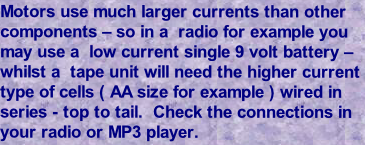
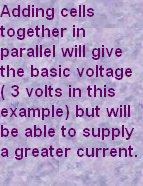
As you might expect – adding batteries together in ‘series’ will add the voltages together. See the ‘stripped-down’ photo here.
Two 3 volt batteries will give a 6 volt supply. This is something you may not have realised but will certainly have used many times. Putting 4 separate cells into a tape player or disc unit will give a 6 volt supply.
Two 3 volt batteries will give a 6 volt supply. This is something you may not have realised but will certainly have used many times. Putting 4 separate cells into a tape player or disc unit will give a 6 volt supply.



Single
1.5 volt cell
1.5 volt cell
3 volts
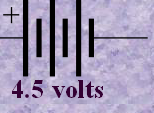

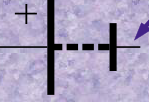
And as this can get a bit time
consuming….. Higher voltages are shown like this
E.g. 9 volts
If you were to slice through a 9 volt battery
– how many cells would you expect to find ?
– how many cells would you expect to find ?
A whole variety of batteries exist – some can be recharged whilst others are thrown away after using and running out of charge. Generally the most expensive batteries will last longer and give more ‘power’ although different types of battery are designed to give not only a certain voltage but also supply a certain current for a certain time….this is the ‘capacity’ of the battery. This value is given in Ah ( Amp hours) and is probably one of the most important features you should look at when deciding on a power source for a particular application. Think what you most need from your battery.
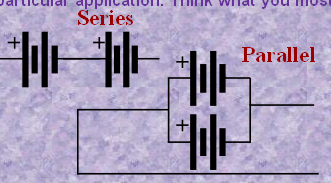

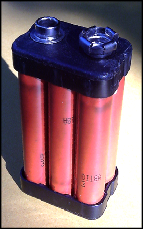
A ‘stripped down’ 9 volt battery

IWB Electronics Wordsearch
Download Wordsearch
